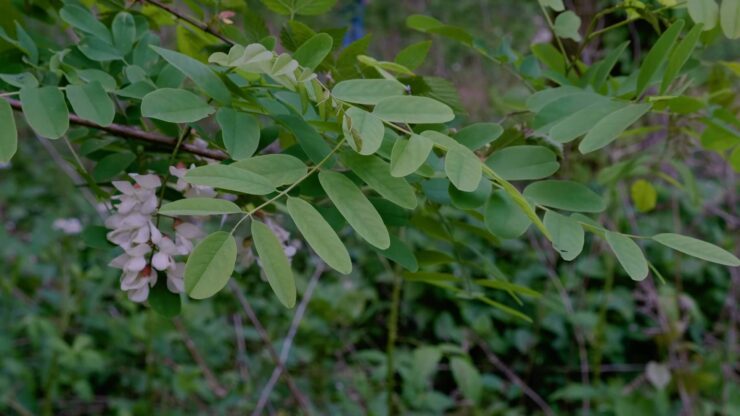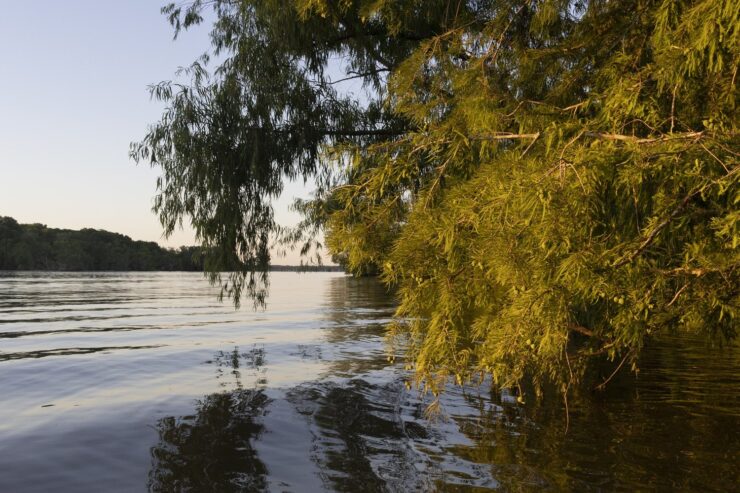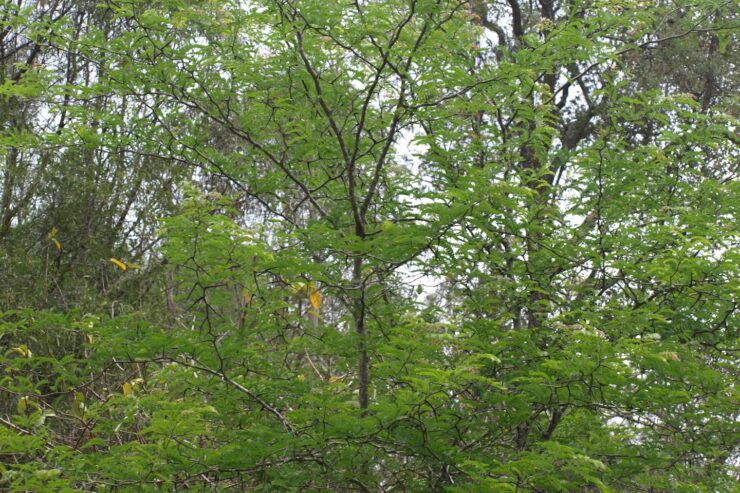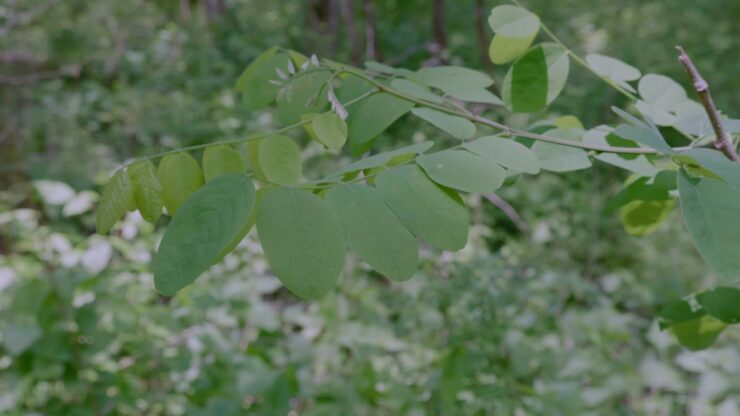Gleditsia aquatica is a tree that originates in the southeastern United States and adjacent regions. This swampy tree occurs primarily in southern parts of the United States. It comes from southeastern, western Florida to eastern Texas and northern Illinois. It can be found as far north as Ohio, southern New York, and southwestern Connecticut.
Important Role in Nature
Water Locust adapts well to hydric conditions. Its roots stabilize soil, preventing erosion. This makes it valuable in wetland restoration projects. It also supports local biodiversity. Many animals rely on it for habitat.
Support for Biodiversity

Water Locust supports a wide range of biodiversity. The tree provides habitat and shelter for numerous animal species. Birds, small mammals, and various insects find refuge in its branches.
The dense foliage offers nesting sites for birds, while the tree’s structure provides protection from predators. The fallen leaves and pods also contribute to the forest floor’s organic matter, supporting decomposers and enriching the soil.
Nutrient Cycling
The presence of Water Locusts contributes to nutrient cycling within its ecosystem. As leaves and pods fall and decompose, they return nutrients to the soil. This natural process enhances soil fertility, promoting the growth of other plant species. The tree’s roots also interact with soil microorganisms, facilitating nutrient uptake and further improving soil health.
Water Regulation

Water Locust helps regulate water in wetland environments. Its root system absorbs and retains water, which can mitigate flooding during heavy rains. By holding water in the soil, it maintains soil moisture levels during dry periods, supporting the overall health of the wetland.
This water regulation capacity is crucial for maintaining the hydric conditions necessary for many wetland plants and animals.
Habitat Creation
The tree’s physical structure provides various microhabitats. Cavities in the trunk and branches can become homes for birds and small mammals. The dense canopy offers shade and cooler microclimates, benefiting understory plants and animals. By creating these habitats, Water Locust fosters a diverse and dynamic ecosystem.
Pollination and Food Source
Water Locust produces small greenish-yellow flowers in late spring. These flowers attract a variety of pollinators, including bees and other insects. The pollination process is essential for the tree’s reproduction and helps support local pollinator populations.
Additionally, the tree’s seed pods serve as a food source for wildlife. Various animals feed on the seeds, which aids in seed dispersal and the propagation of the species.
Physical Characteristics
Water Locust is a deciduous tree. It can grow up to 60 feet tall. Its bark is gray-brown and furrowed. Leaves are pinnately compound, with multiple leaflets. Thorns are long and sharp, found on the trunk and branches. In late spring, it produces small greenish-yellow flowers. These give way to flat, brown seed pods.
Growth Conditions
Water Locust prefers full sun. It grows best in wet, swampy soils. However, it can tolerate brief periods of drought. Its adaptability makes it a resilient choice for difficult planting sites.
Phytochemical Properties

Water Locust contains various bioactive compounds. These include triterpenoidal saponins. These compounds have antimicrobial and anti-inflammatory properties. They also exhibit cytotoxic effects on certain cancer cells. The tree’s extracts can be used in traditional medicine.
Adaptation to Stress
Water Locust can withstand drought and temperature extremes. This makes it a good choice for areas prone to environmental stress. Its ability to thrive in such conditions supports its use in restoration projects.
Human Uses
Water Locust’s wood is durable. It can be used for furniture and fencing. However, its primary value lies in erosion control and habitat restoration. Its medicinal properties also offer potential benefits.
Water Locust also possesses medicinal properties that hold potential benefits. Extracts from the tree have shown antimicrobial and anti-inflammatory effects. Traditional medicine uses these extracts to treat various ailments.
Conclusion
Water Locust plays a crucial role in wetland ecosystems. Its wide root system and adaptability make it an excellent choice for erosion control and restoration projects. Though its thorns can be hazardous, its benefits far outweigh its drawbacks. Its presence supports biodiversity and helps maintain ecological balance.

